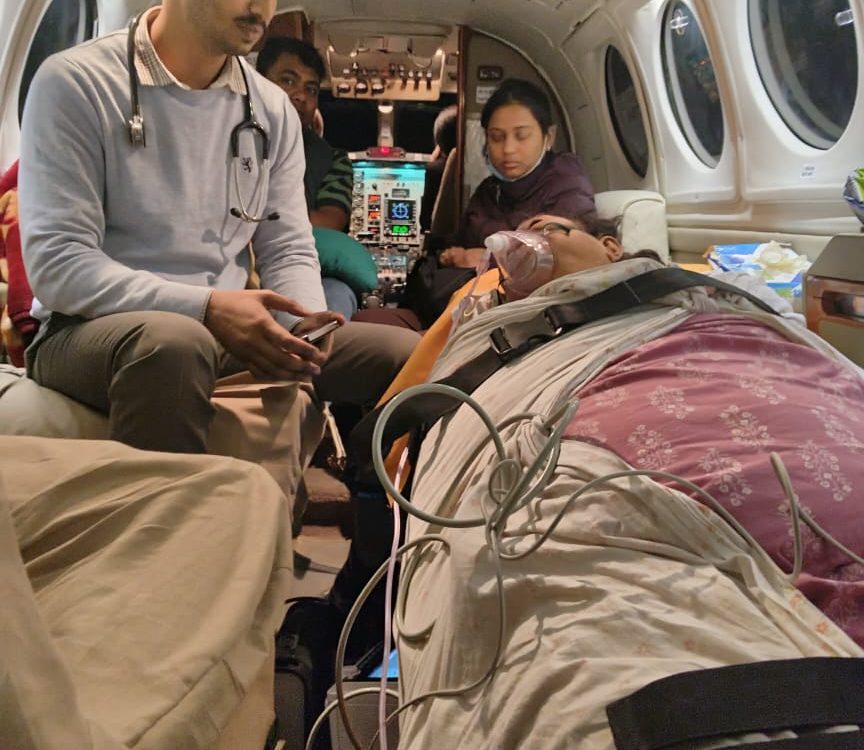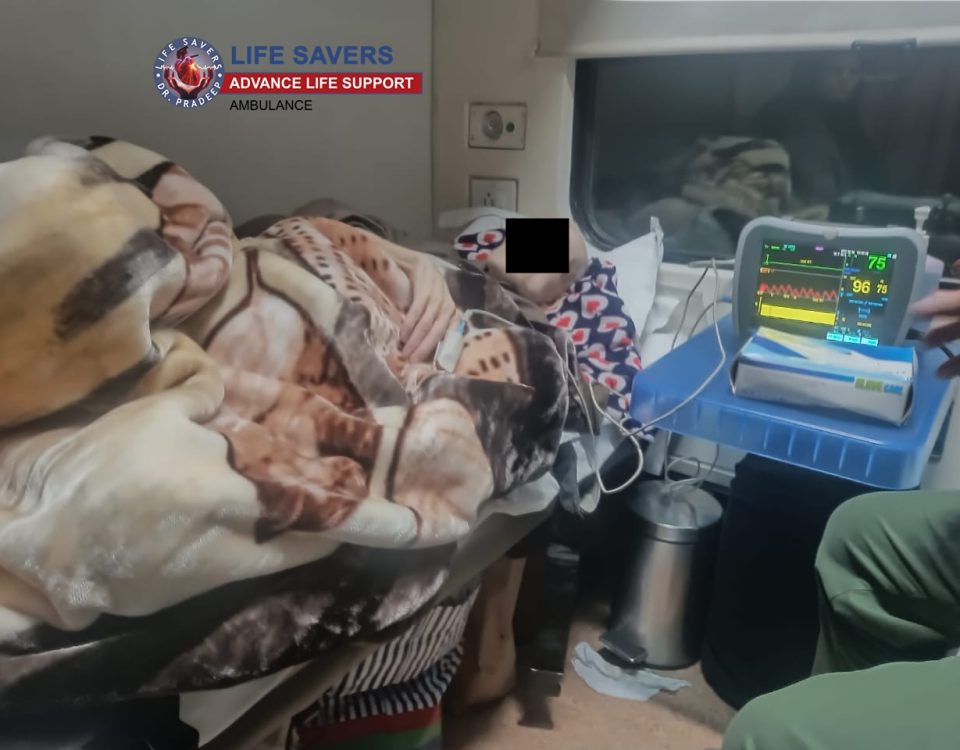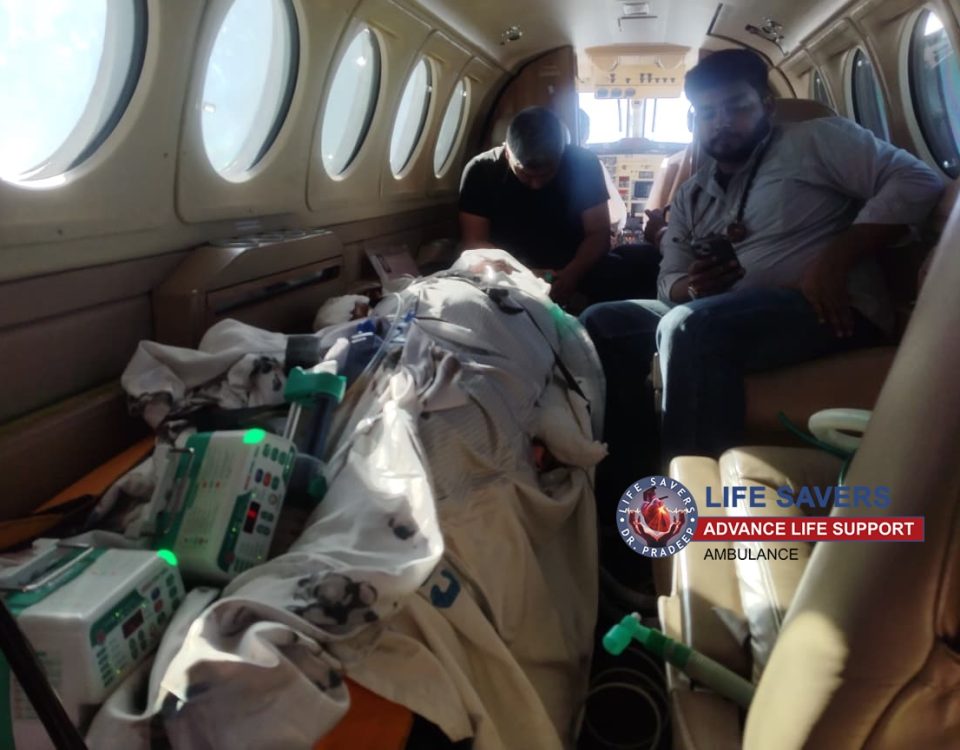Elderly Patient with Chronic Illnesses – Lucknow to Hyderabad by Indigo Commercial Flight
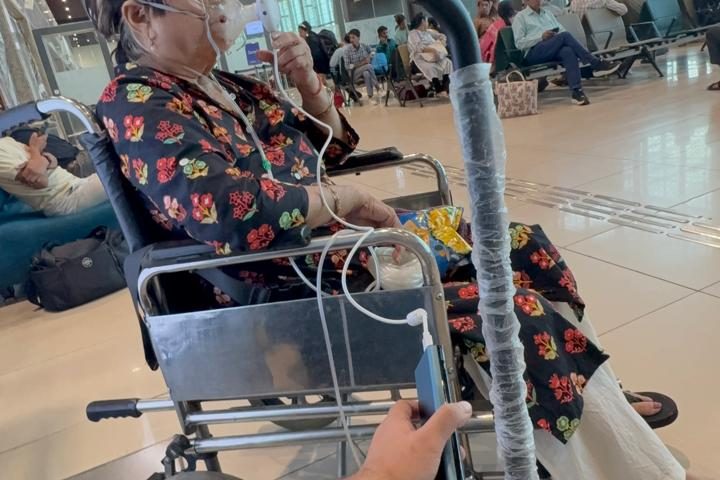
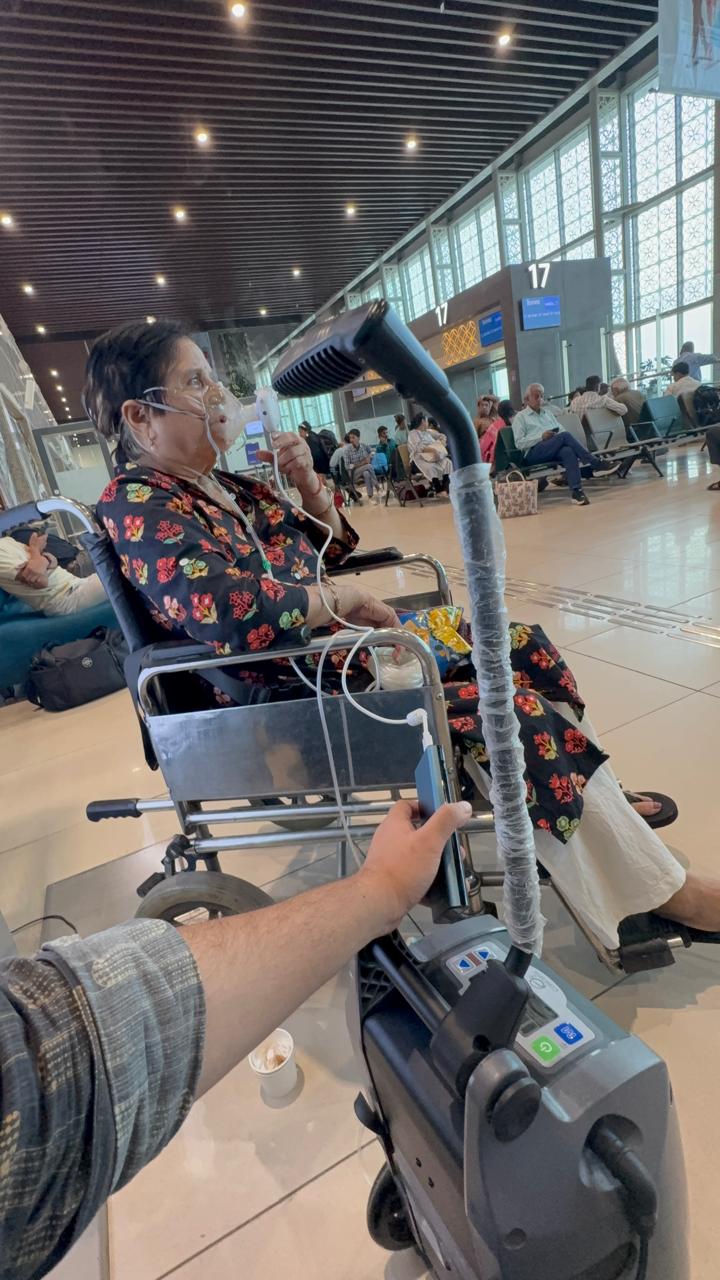
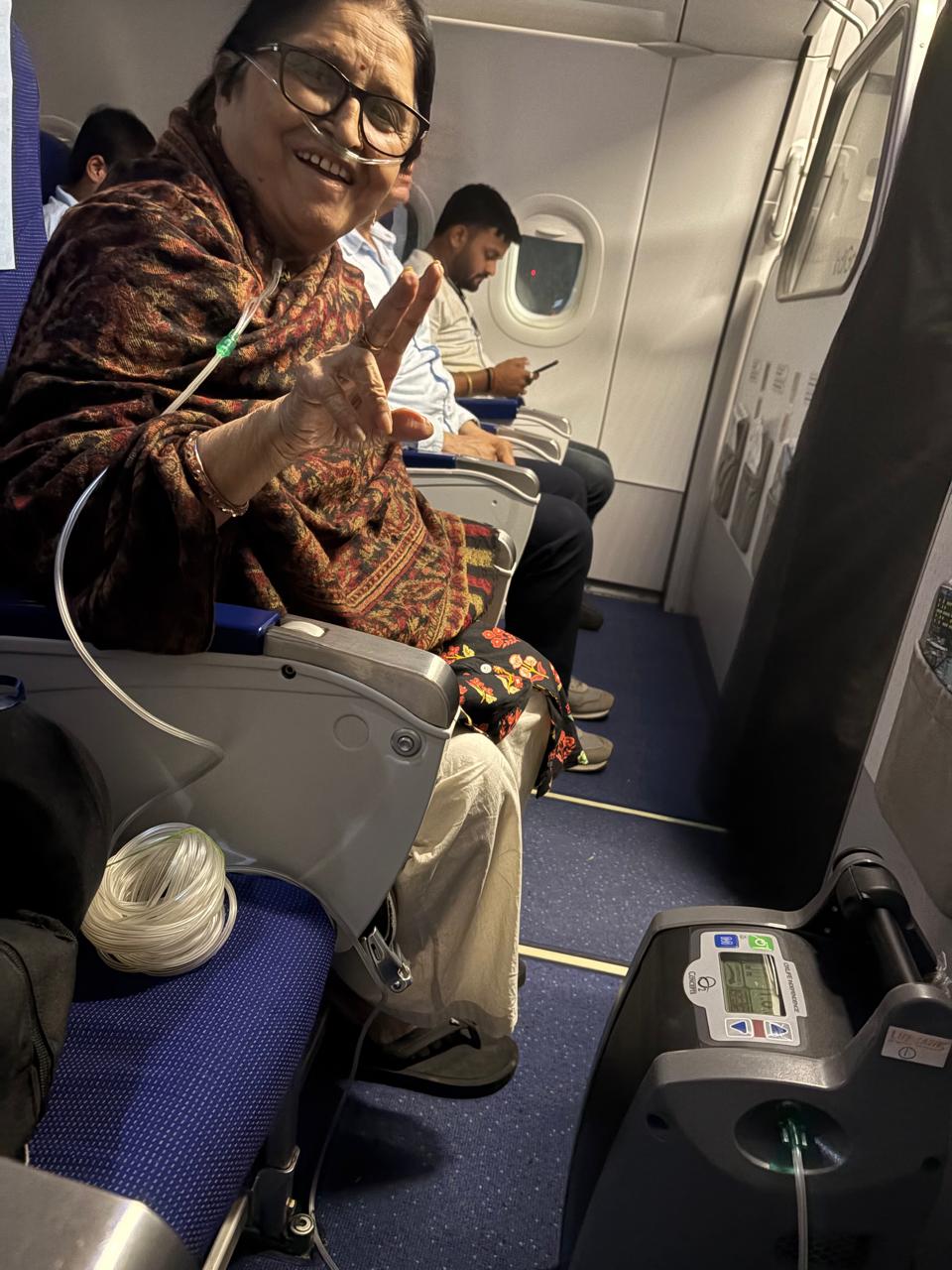
At Lifesavers Ambulance Service, we take pride in providing safe, reliable, and medically-supervised transport for critically ill or elderly patients.
Recently, we successfully coordinated a complex air medical transfer of a 70-year-old female patient from Lucknow to Hyderabad, who was suffering from multiple chronic health conditions. This real-life case exemplifies our clinical expertise, continuous monitoring protocol, and patient-first approach.
Clinical Background of the Patient
The patient was a 70-year-old female, with a long-standing history of:
● Type 2 Diabetes Mellitus (T2DM)
● Systemic Hypertension
●Chronic Obstructive Pulmonary Disease (COPD)
●Post-Tuberculosis Pulmonary Fibrosis
Due to the progression of pulmonary compromise and age-related frailty, she had been oxygen-dependent, receiving low-flow oxygen therapy (0.5 L/min) at home for several days prior to the transfer. The patient had been under regular medical supervision and was deemed stable for commercial airline transfer under medical escort.
Reason for Transfer
The family wished to relocate her to Hyderabad, their native place, for ongoing care, family support, and better medical accessibility. Given her fragile respiratory status, commercial travel posed a significant challenge, especially due to potential altitude-induced hypoxemia during flight.Pre-Flight Medical Evaluation
Before the transfer:
●A detailed pre-flight medical clearance was obtained from her primary physician.
●The patient underwent a fitness-to-fly assessment, including arterial blood gas analysis (ABG), pulse oximetry, spirometry, and chest X-ray.
●The airline (IndiGo) was informed and all necessary approvals for oxygen carriage and medical escort were taken in advance.
●Our in-flight medical team, including a doctor and paramedic, were assigned to monitor her throughout the journey.
Onboard Condition and Oxygen Adjustment
At ground level, the patient was clinically stable, maintaining an SpO2 (oxygen saturation) of 98% on 0.5 L/min of nasal oxygen. However, approximately 15 minutes after take-off, due to cabin pressure changes at cruising altitude (typically 6,000 to 8,000 feet equivalent), the patient exhibited oxygen desaturation.
Key Observations:
●SpO2 dropped to 92% initially, prompting immediate clinical intervention.
●Oxygen flow was gradually titrated up to 2 L/min.
●Within minutes, the patient stabilized, maintaining SpO2 between 96% - 97%.
●Other vital signs (heart rate, respiratory rate, blood pressure, temperature) remained within normal range.
●The patient remained conscious, cooperative, and hemodynamically stable throughout the flight.
Continuous Monitoring and In-Flight Care
Our experienced medical escort team ensured:
● Continuous pulse oximetry
●Regular auscultation for breath sounds
●Monitoring for signs of hypoventilation, fatigue, or cyanosis
●Readiness with emergency medications, portable oxygen concentrator, resuscitation equipment, and monitoring tools.
We also maintained close coordination with airline staff to ensure seamless service without disrupting other passengers.
Safe Arrival and Stabilization in Hyderabad
Upon descent and landing in Hyderabad:
●The patient’s oxygen demand gradually decreased.
●By the time of disembarkation, her oxygen requirement reverted to 0.5 L/min, indicating adaptive stabilization to lower altitude.
●She was safely transferred from the airport to her home under our supervision.
●The patient was alert, responsive, and clinically stable.
Medical Learning: Impact of Altitude on Oxygen
Requirement
Commercial aircraft cabins are pressurized, but the partial pressure of oxygen at altitude is significantly lower than on the ground. Patients with underlying chronic lung conditions
like COPD or pulmonary fibrosis often experience hypobaric hypoxemia, even if stable on ground-level oxygen. In such patients:
●Pulse oximetry alone may not predict in-flight hypoxemia
●Pre-flight hypoxia altitude simulation tests (HAST) can be useful
●Oxygen flow must be adjusted dynamically during flightThis case highlights the importance of trained medical escorts who can titrate oxygen in-flight and respond to any emergencies.
Why Choose Us for Air Medical Transfers?
Whether you're relocating a loved one, organizing a medical return, or planning a transfer to a different city for treatment, Express Dead Body Transport & Medical Transfer Services offers:
✅ Trained Doctors & Paramedics Onboard
✅ Pre-Flight Medical Clearance & Assessment
✅ Oxygen Equipment & Emergency Drugs
✅ Coordination with Commercial Airlines
✅ Safe Transfer for Geriatric, Terminal, or Critical Patients
We ensure compassionate, customized, and clinically safe transfers, even for patients with complex comorbidities.
Final Words
The successful transfer of this elderly patient with multiple health conditions is a testament to the planning, clinical precision, and human compassion that defines our service. With careful monitoring and timely oxygen management, we delivered her safely from Lucknow to Hyderabad—comfortably and securely.
If you are looking for professional patient transport services by air, whether for senior citizens, bedridden patients, or those with oxygen dependency, contact us today. Your loved one's safety is our topmost priority.

